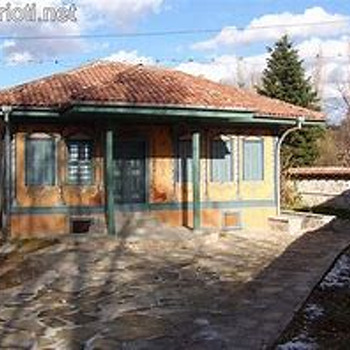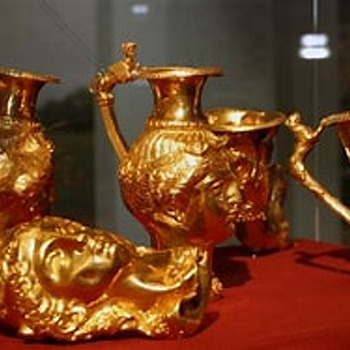Medieval fortress Krasen Panagyurishte city
Overview
The ruins of the Krasen fortress are located 6 km south of Panagyurishte. Studies show that during the early Byzantine and medieval eras, Krasen was one of the most important cities in the region. This is evidenced by the open fortification system with a double fortification line and numerous towers, dense housing, extensive suburbs outside the fortress. Two churches and several necropolises have been studied. Information about the infrastructure of the city is given by the large pool for water storage and the openings of canals in the fortress walls for the drainage of the atmospheric waters. Before the fortress was built, traces of the Stone Age and the Early Iron Age were found on the hill. In the IV-V centuries, a late antique settlement appeared along the Luda Yana River. At the foot of the hill is discovered one of the earliest churches in the Balkans, which dates from the IV century. The first fortifications on the hill were built in the VI century. They are associated with the large-scale program for the construction of fortresses, conducted by Emperor Justinian I the Great.
In the XIII-XIV centuries the city experienced its greatest development and became one of the important medieval centers. Even under Tsar Assen I or at the latest under Tsar Kaloyan the fortress was permanently conquered by the Bulgarians. Over the next two centuries, Krasen was one of the important strongholds of Bulgaria south of the Balkan Mountains. It controls a significant part of Western Thrace. The last three decades of the 14th century have been particularly dramatic for the region. It was subjected to constant Turkish invasions, which led to the conquest of a number of fortresses such as Samokov, Ihtiman, Kyustendil, Sofia.
A rare discovery shows who was Krasen's manager in those tragic times. A bronze matrix for wax seals was found during the clearing of the outer face of the fortress wall. Such specially made matrices are very rare and are usually used by nobles holding high administrative positions and keeping active correspondence. The name of the owner is formed in a complex monogram typical for the epoch, which the specialist epigraph Vasilka Gerasimova managed to read. The palaeographic analysis of the text, the spelling of the letters and the special emphasis on the letter "I" are connected with the spelling reform of Patriarch Eftimius. He imposed the new grammatical norms in the 80s and 90s of the 14th century. Knowledge of the new spelling shows a close connection of the owner of the seal with the capital Tarnovgrad.
The year of the Ottoman conquest of the fortress is unknown. Some data indicate that this probably happened after the fall of Sofia in the early 80s of the XIV century. Krasen was captured after stubborn armed resistance, as evidenced by the numerous breakthroughs and destructions in the walls and the thick layers of ash left by the raging fires in the fortress. It was in this battle that the last governor of the city, Raphael, died. Then his personal seal rolled along the walls of the fortress, where archaeologists will find him six centuries later. After the end of the 14th century there are no traces of inhabiting the fortress. Probably the population was killed or evicted. Until the end of the 17th century, however, there was a small Christian settlement with a small church within the old suburbs.
Recommended
- Historical Museum - Panagyurishte
- Memorial complex
- House-Museu Raina Knyaginya
- Sun clock
- Tuteva's house and others


 Bulgarian
Bulgarian Romanian
Romanian


